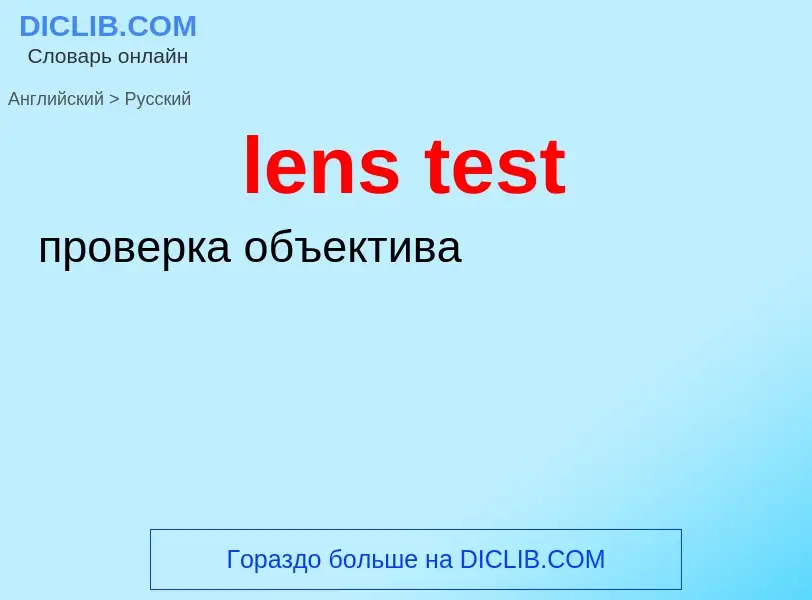Перевод и анализ слов искусственным интеллектом ChatGPT
На этой странице Вы можете получить подробный анализ слова или словосочетания, произведенный с помощью лучшей на сегодняшний день технологии искусственного интеллекта:
- как употребляется слово
- частота употребления
- используется оно чаще в устной или письменной речи
- варианты перевода слова
- примеры употребления (несколько фраз с переводом)
- этимология
lens test - перевод на русский
['lenzkæp]
фотография
крышка объектива
общая лексика
фотографический объектив
общая лексика
широкоугольный объектив
Определение
1) Растение семейства бобовых со съедобными плоскими округлыми бобами.
2) Съедобные зерна такого растения.
2. ж.
Певчая птица семейства вьюрковых.
Википедия
The lens, or crystalline lens, is a transparent biconvex structure in most land vertebrate eyes. Along with the cornea, aqueous and vitreous humours it refracts light, focusing it onto the retina. In many land animals the shape of the lens can be altered, effectively changing the focal length of the eye, enabling them to focus on objects at various distances. This adjustment of the lens is known as accommodation (see also below). In many fully aquatic vertebrates such as fish other methods of accommodation are used such as changing the lens's position relative to the retina rather than changing lens shape. Accommodation is analogous to the focusing of a photographic camera via changing its lenses. In land vertebrates the lens is flatter on its anterior side than on its posterior side, while in fish the lens is often close to spherical.
Accommodation in humans is well studied to allow artificial means of supplementing our focus such as glasses for correction of sight as we age. The refractive power of a younger human lens in its natural environment is approximately 18 dioptres, roughly one-third of the eye's total power of about 60 dioptres at infancy and 10 dioptres by the age of 25 years. Most of the reduction in our natural accommodation as we age is attributed to the aging of our lenses.



















.jpg?width=200)


![Leica]] rangefinder lens Leica]] rangefinder lens](https://commons.wikimedia.org/wiki/Special:FilePath/Leica 3 lens.jpg?width=200)
![Different [[apertures]] on the same lens. Different [[apertures]] on the same lens.](https://commons.wikimedia.org/wiki/Special:FilePath/Lenses with different apertures.jpg?width=200)


